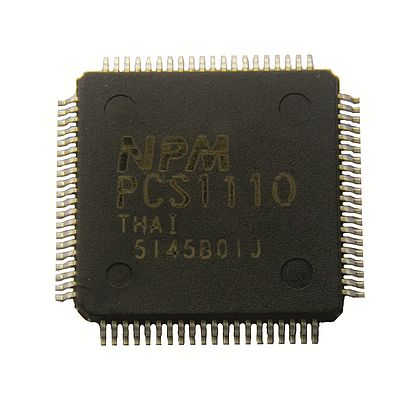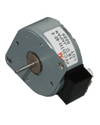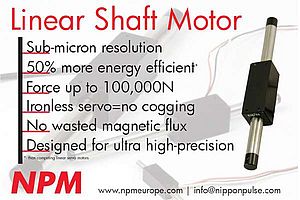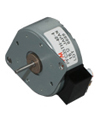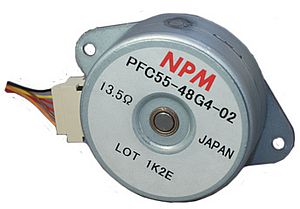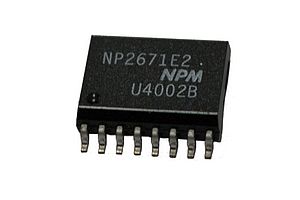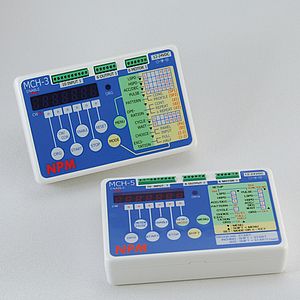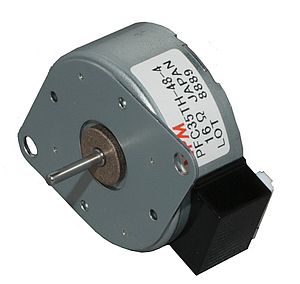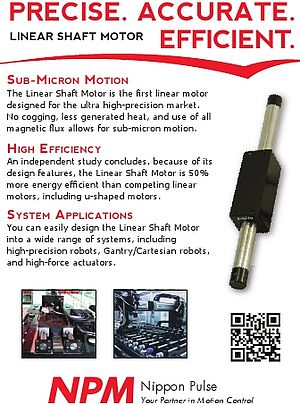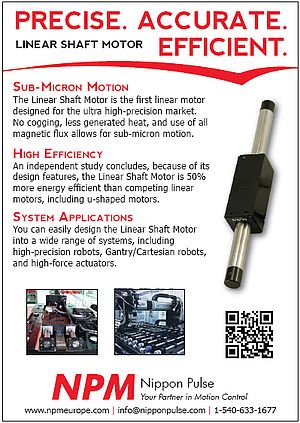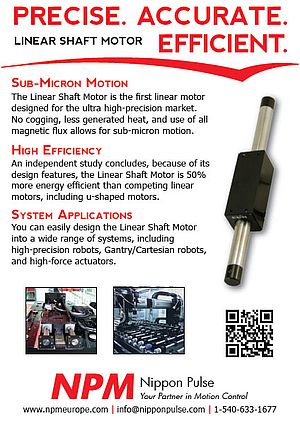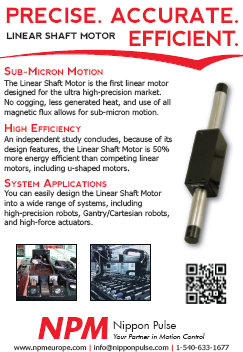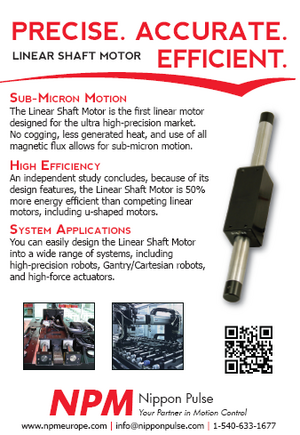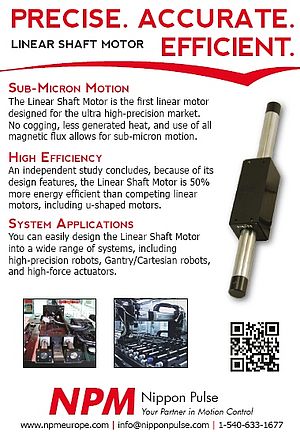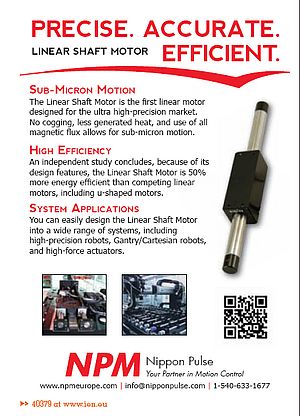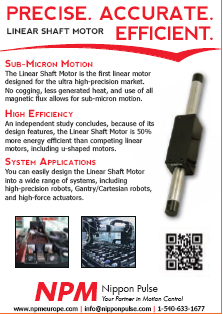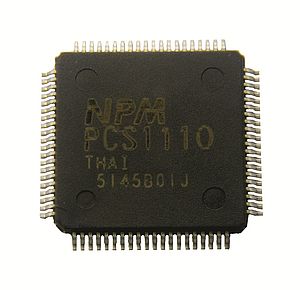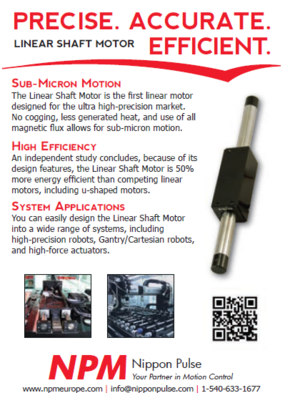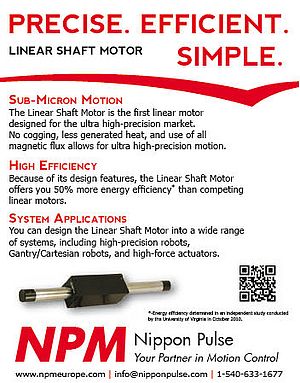Nippon Pulse has introduced the PCS1110 control chip, an 80-pin electronic cam TQFP designed to replace mechanical cams. By making the switch to the electronic cam chip, users are able to program up to 128 unique points (per rotation of the master axis) on the 'slave' axis, a far greater number than can be achieved by a traditional mechanical cam. The chip receives angle information from the master axis via a position sensor such as an encoder and subsequently outputs pulses to control the slave axis. Using the device eliminates the need for a large software program, synchronizing the master axis motion and the slave axis movement. Even with the addition of common LSIs, users need to precisely calculate linear operation, requiring a large CPU. The need for that large CPU is eliminated with the use of the chip. It contains RAM, allowing the user to program up to 128 unique points on the slave axis (per revolution of the master axis). Because the shape of the mechanical cam is fixed, it can only perform one motion profile. However, with the RAM contained in the chip, the number of profiles available is far greater. Several different chips can be driven off a single master axis, independently with different motion profiles. Because the chip also features a pulse generating circuit, there is no need for a master axis signal. Using an internal oscillator, users are able to simulate the master axis with a 'virtual main axis.'
Control Chip
Designed to replace mechanical cams
- by Nippon Pulse America, Inc.
- October 24, 2012
- 676 views


